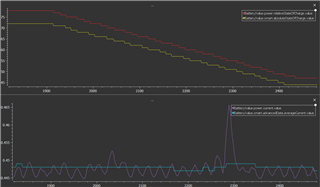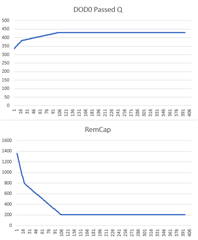Other Parts Discussed in Thread: BQSTUDIO
Hello TI Team,
Since few weeks ago, by increasing max discharge current from 23A to 30A (only during a 10s spike), we have been observing some weird cases that we would understand, an example follows.

With a 75 cycles battery (more in reality, but our charger leads to not detected end of charge), SOH 96%, voltage 16.19V on a 4S LiHV pack, we observed that while consuming small current (450mA), SOC drops down by itself from 73% to 44%, same behaviour on integrated and remaining charges, which seems not in agreement to the current and average current.
Do you have any idea from where it comes from ? is it the gouge by itself ?
Many thanks for the help


